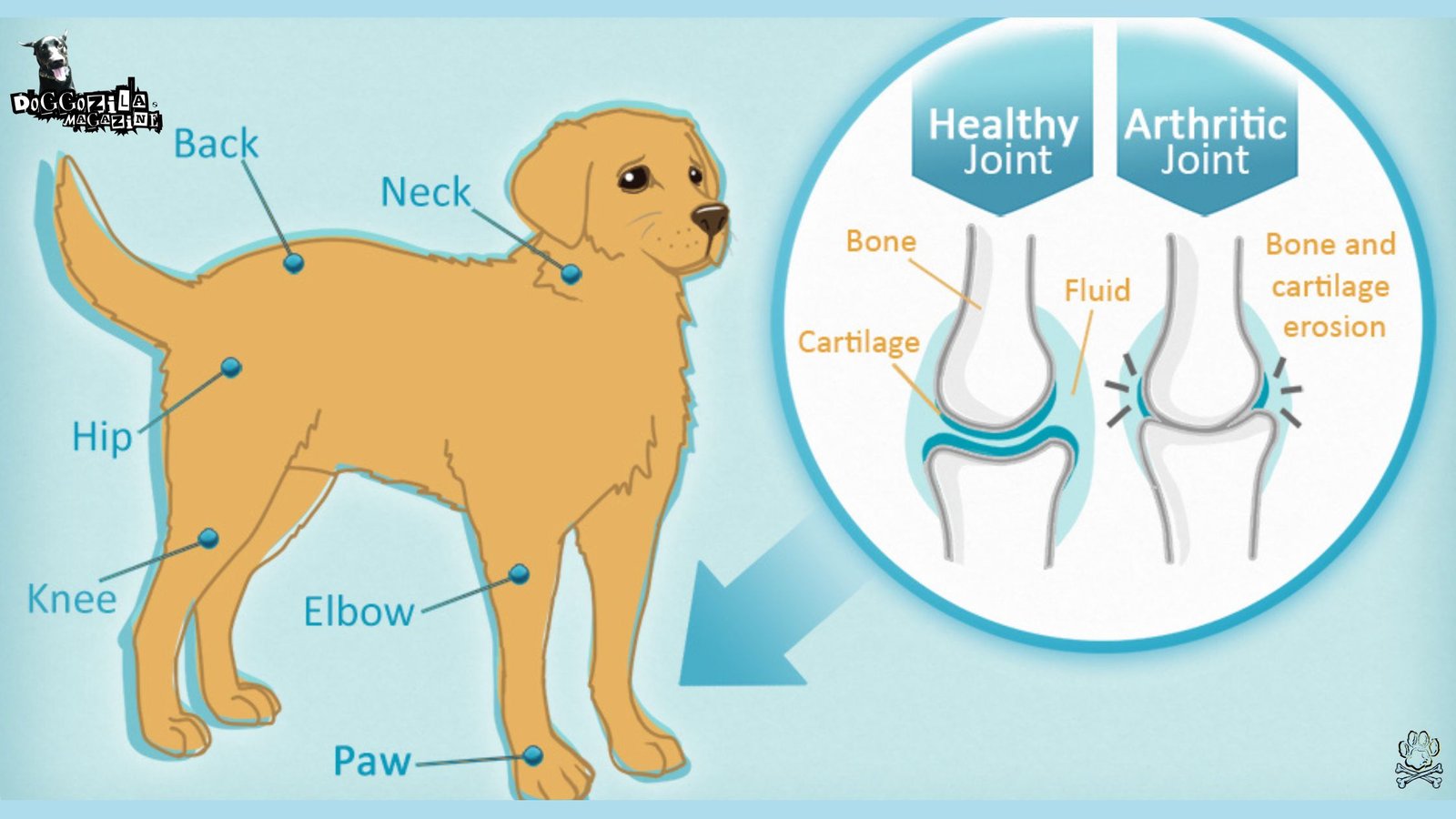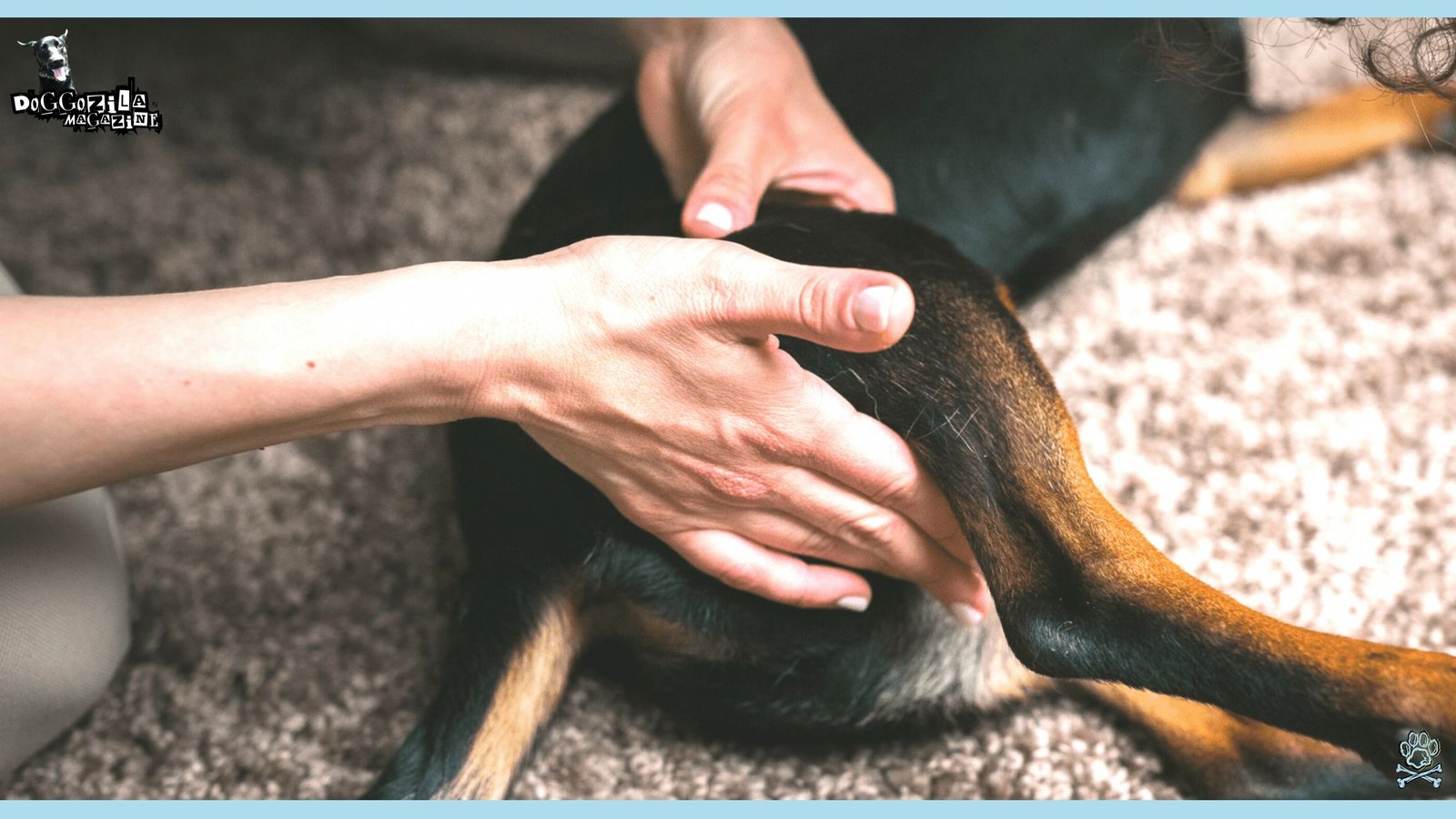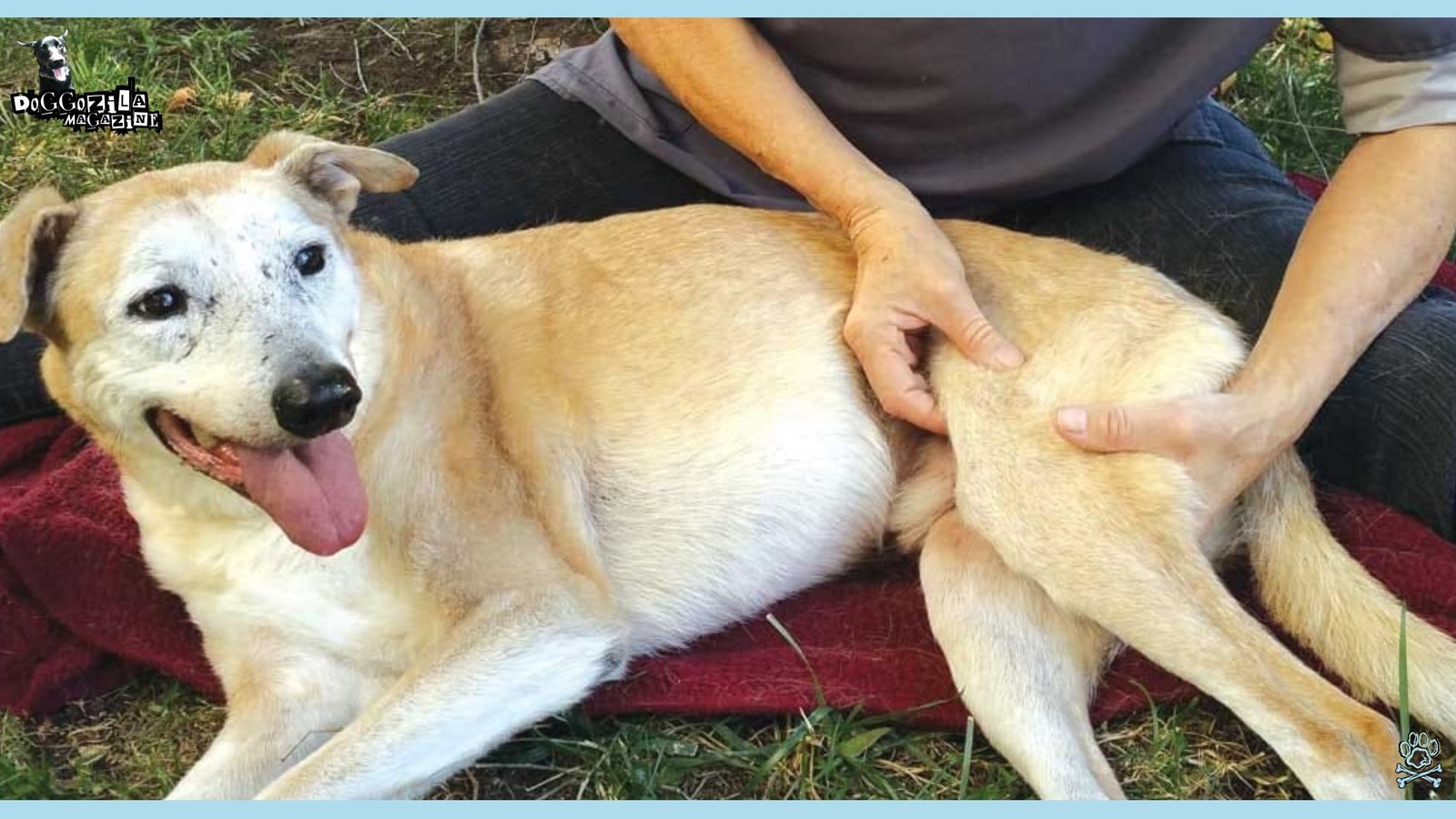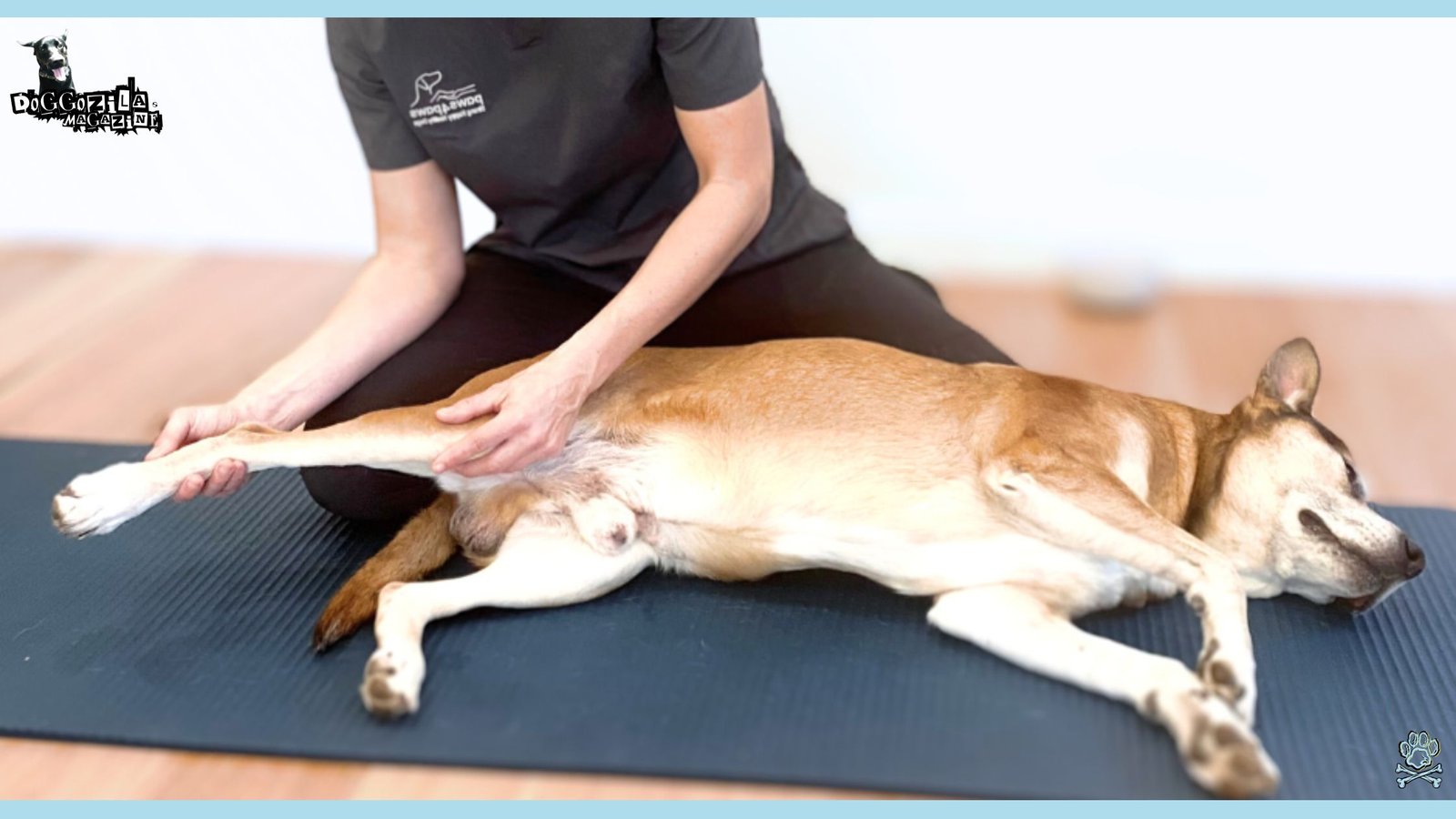Watching your beloved senior furry friend slow down from arthritis can be heartbreaking, but there’s so much hope! With today’s advancements in care, senior dogs with arthritis can enjoy comfortable, joyful lives full of tail wags and adventures.
Senior dogs are cherished companions, but as they age, they often face physical challenges, arthritis being one of the most common. This joint condition can affect everything from how they walk to how they play. The good news? With attentive care, you can help your senior pup stay comfortable, active, and happy in their golden years.
This guide will walk you through everything from spotting early signs to cutting-edge treatments that really work. Get ready to discover how to help your old friend feel young again!

UNDERSTANDING ARTHRITIS IN SENIOR DOGS
Arthritis, or osteoarthritis, is a degenerative joint disease that causes inflammation, stiffness, and pain. It typically develops slowly and can be hard to spot early on. But with awareness and the right support, you can ease their discomfort and improve their quality of life.
Arthritis isn’t just “slowing down“, but it’s real joint pain that needs proper care. Over 80% of dogs show arthritis signs by age 8, but many owners miss early symptoms.
The good news?
Early intervention can dramatically slow progression. Arthritis occurs when joint cartilage wears down, causing bone-on-bone friction and inflammation. While incurable, it’s highly manageable with today’s options. Your dog doesn’t have to live in pain!
What and Why Exactly Happens in Arthritic Joints?
Arthritis develops due to joint wear and tear, often accelerated by past injuries, weight issues, or genetics. Larger breeds are more prone, but any dog can be affected. As cartilage breaks down, bones rub together, causing pain and inflammation.
Healthy joints have smooth cartilage cushions that wear down over time in senior dogs with arthritis. This leads to painful bone grinding, inflammation, and bony overgrowths called osteophytes. Synovial fluid ( joint lubricant ) decreases in quantity and quality.
The joint capsule thickens, limiting mobility. Surprisingly, dogs rarely vocalize this pain – they show it through subtle behavior changes. Understanding these changes helps you intervene early when treatment works best.
Common Causes of Arthritis Beyond Aging of Senior Dogs
While age is the biggest factor, genetics, obesity, past injuries, and certain breeds ( Labs, Shepherds, Dachshunds ) increase risk. Poor nutrition in puppy hood can set the stage for joint issues later. Infections like Lyme disease sometimes trigger arthritis too. The exciting part? Many of these risk factors are modifiable even in senior years!
Early Signs of Arthritis Every Owner Should Know in Their Senior Dogs
Look out for signs like limping, difficulty standing up, reluctance to jump or climb stairs, and changes in behavior. They might sleep more, show irritability, or hesitate during walks. These signs shouldn’t be ignored and early intervention is key.
Spotting arthritis early means starting treatment before major damage occurs. Watch for stiffness after rest, reluctance to jump/use stairs, lagging on walks, or personality changes. Some dogs lick painful joints excessively or have accidents because squatting hurts. Catching these clues early leads to the best outcomes!
🔑 Key Points: Arthritis, or osteoarthritis, is a degenerative joint disease that causes inflammation, stiffness, and pain. Look for signs like limping, difficulty standing up, reluctance to jump or climb stairs, and changes in behavior. Early intervention can dramatically slow progression.

DIAGNOSIS OF ARTHRITIS IN SENIOR DOGS: GETTING THE FULL PICTURE
Proper diagnosis ensures your dog gets the right treatment mix. Your vet will combine physical exams, movement assessments, and sometimes imaging. Blood tests rule out other conditions mimicking arthritis. The process is painless but incredibly valuable for tailoring care.
The Hands-On Vet Exam
Vets check for joint swelling, limited range of motion, and pain responses. They’ll observe how your dog sits, stands, and walks. A “sit test” ( difficulty sitting squarely ) often reveals hip arthritis. Your detailed observations at home help guide this exam tremendously.
Imaging Options Explained
X-rays show bone changes but miss early cartilage damage. Advanced clinics may use ultrasound or MRI for soft tissue details. Some vets recommend joint fluid analysis to check inflammation levels. The best approach depends on your dog’s specific case and symptoms.
Ruling Out Other Conditions
Thyroid issues, neurological problems, and some cancers can mimic arthritis. Blood work helps eliminate these possibilities. Lyme disease testing for dogs matters in endemic areas. Accurate diagnosis ensures your treatment dollars go toward what really helps!
🔑 Key Points: If your dog’s pain seems unmanageable, or mobility drastically decreases, consult your vet. X-rays or advanced imaging may reveal the extent of the arthritis. Early treatment options often make a big difference. You may also consider a canine rehabilitation specialist or pain management expert.

GAME-CHANGING TREATMENT OPTIONS FOR ARTHRITIS IN SENIOR DOGS
Today’s arthritis treatments go far beyond basic pain meds! A multi-modal approach works best, combining medications, supplements, therapies, and lifestyle changes. Many dogs regain significant mobility with proper care.
Veterinary Medications That Work
NSAIDs like Galliprant specifically target arthritis pain with fewer side effects. New monoclonal antibody treatments ( Librela ) block pain signals for months per injection. Gabapentin helps nerve-related discomfort. Always use vet-prescribed medications, as human drugs can be deadly!
Joint Supplements with Proven Benefits
Glucosamine/chondroitin supplements ( Dasuquin, Cosequin ) help rebuild cartilage over time. Omega-3s ( especially EPA/DHA ) reduce inflammation powerfully. Green-lipped mussel and turmeric offer natural anti-inflammatory benefits. It takes 4-6 weeks to see full effects but worth the wait!
Cutting-edge Therapies
Laser therapy reduces pain and increases mobility in just sessions. Hydrotherapy builds muscle without joint stress. Acupuncture releases natural pain-relieving endorphins. Cold laser and PEMF devices for home use extend clinical benefits. So many exciting options beyond pills!
🔑 Key Points: A multi-modal approach works best, combining medications, supplements, therapies, and lifestyle changes. New monoclonal antibody treatments block pain signals for months per injection. Gabapentin helps nerve-related discomfort. Laser therapy reduces pain and increases mobility in just sessions.

HOME CARE THAT MAKES A DIFFERENCE FOR SENIOR DOGS WITH ARTHRITIS
Your daily care routine powerfully impacts your arthritic dog’s comfort. Simple home adjustments can reduce pain and keep joints moving. Little changes add up to big quality-of-life improvements! Helping a senior dog with arthritis starts by making their environment more joint-friendly. Thoughtful adjustments can reduce strain, support mobility, and ease daily routines.
Home Modifications for Easier Living for Senior Dogs with Arthritis
Orthopedic beds with memory foam support aching joints. Raised food bowls prevent painful neck bending. Non-slip rugs protect against falls on hard floors. Pet ramps help them access favorite spots safely. These tweaks help them stay independent longer!
Swap out slippery floors for rugs or foam mats to prevent slips. Provide orthopedic beds with memory foam to cushion aching joints. Elevate food and water bowls to minimize bending, and use ramps instead of stairs where possible.
The Right Exercise Balance
Short, frequent walks maintain mobility without overdoing it. Swimming is ideal exercise when available. Gentle stretching improves flexibility. The key is consistent movement without exhaustion. Even five minutes twice daily helps tremendously!
Movement is crucial, but overexertion can worsen pain. Aim for short, gentle walks a few times a day. Swimming is a great low-impact option for keeping muscles strong. Skip fetch marathons, instead, try controlled leash walks or gentle indoor games.
Massage Techniques You Can Do
Learn simple canine massage to increase circulation and relax stiff muscles. Focus on long, gentle strokes toward the heart. Warm ( not hot ) rice socks soothe achy joints. Always watch for signs of discomfort and stop if needed.
Bonding while helping them feel better is a win/win! Massage improves circulation and eases stiffness. Light stretching ( with your vet’s guidance ) keeps joints limber. Combine this with warm compresses on sore areas after activity to soothe inflammation.
🔑 Key Points: Orthopedic beds with memory foam support aching joints. Swap out slippery floors for rugs or foam mats to prevent slips. Short, frequent walks maintain mobility without overdoing it. Swimming is ideal exercise when available. Massage improves circulation and eases stiffness.

NUTRITION FOR JOINT HEALTH
What your dog eats and how you support their joint health, can make a big difference. Food directly impacts arthritis inflammation and joint function. The right diet can be as powerful as medications for some dogs! Weight management is crucial, every extra pound stresses joints.
Best Commercial Foods for Arthritis
Look for healthy dog diets with added omega-3s, glucosamine, and antioxidants. Prescription joint health foods ( Hill’s j/d, Royal Canin Mobility ) have clinically proven ingredients. Grain-free isn’t necessary unless allergies exist. The right food makes a visible difference!
High-quality, easily digestible food helps maintain a healthy weight and reduce stress on joints. Look for foods rich in omega-3 fatty acids ( like fish oil ) to fight inflammation. Avoid calorie-heavy treats that contribute to weight gain.
Helpful Homemade Additions and Weight Management Strategies
Fresh additions like blueberries ( antioxidants ), sweet potatoes ( vitamin C ), and sardines ( omega-3s ) boost commercial diets. Bone broth provides natural collagen. Always consult your vet before making dietary changes to ensure balance.
Even a 5% weight reduction dramatically improves mobility! Measure portions carefully, limit treats, and increase low-impact activity. Your vet can calculate ideal calorie needs. Watching the scale means more pain-free years together!
Joint Supplements and Pain Management Plans
Glucosamine, chondroitin, and MSM are popular supplements for joint support. They can reduce pain and slow cartilage breakdown. Always consult your vet before starting supplements to ensure the right dosage.
Vets may recommend NSAIDs or other medications for chronic pain relief in dogs. Physical therapy, acupuncture, and laser treatments are also increasingly used. Regular vet checkups ensure you’re staying ahead of the disease’s progression.
🔑 Key Points: Food directly impacts arthritis inflammation and joint function. Look for diets with added omega-3s, glucosamine, and antioxidants. Fresh additions like blueberries, sweet potatoes, and sardines boost commercial diets. Bone broth provides natural collagen.

PAIN MANAGEMENT WITHOUT MEDS FOR SENIOR DOGS WITH ARTHRITIS
Many drug-free options effectively control arthritis discomfort. These complement medications or work for dogs who can’t take standard drugs. Always discuss options with your vet for safest combinations.
Physical Therapy Exercises
Simple at-home exercises strengthen supporting muscles. Try cookie stretches ( luring head movements ), three-leg stands, or slow cavaletti pole work. Even five minutes daily improves stability and reduces pain!
Heat/Cold Therapy Basics
Warm compresses relax stiff joints in the morning. Ice packs reduce flare-up inflammation. Always wrap temperature packs in towels and limit to 10 minutes. Watch for signs of discomfort and adjust accordingly.
Alternative Therapies
Canine chiropractic, TTouch massage, and aromatherapy (lavender for relaxation) help some dogs. CBD oil products for dogs show promise but quality varies – choose veterinary-recommended brands. What works varies by individual!
🔑 Key Points: Many drug-free options effectively control arthritis discomfort. Always discuss options with your vet for safest combinations. Consider physical therapy or heat/cold therapies. We recommend to look into dog chiropractic, TTouch massage, and aromatherapy is proven that help some dogs.

KEEPING THE LIFE OF SENIOR DOGS WITH ARTHRITIS JOYFUL
Arthritis doesn’t have to mean giving up fun! Adapt activities to your dog’s abilities so they stay engaged and happy. Mental stimulation becomes even more important as physical activity changes.
Adapted Play Ideas and Focus on Bonding
Replace fetch with nose-work games or puzzle toys. Try shallow water play for dog summer fun. Short, positive training sessions maintain skills without joint stress. They’ll still light up for special time with you!
Physical limitations don’t limit affection. Cuddles, brushing sessions, and calm play are meaningful ways to bond. Puzzle toys or scent-based games keep their mind sharp without needing strenuous effort.
Comfortable Adventure Tips but Mind the Weather
Use supportive harnesses for assisted walks. Bring portable ramps on outings. Orthopedic strollers let tired dogs stay part of the action. They can still enjoy outings with smart preparations!
Cold, damp weather worsens joint pain. Keep them warm with sweaters and heated beds during winter. In hot weather, ensure they stay cool and hydrated. Watch for limping or stiffness when the weather changes.
Stay Patient with Cognitive Enrichment to be Positive
Food puzzles, new smells, and gentle training prevent mental decline. Teach new verbal commands instead of physical tricks. Keeping their brain active improves overall well-being!
Some days will be harder than others. If they move slower or have an off day, give them grace. Celebrate the little victories like a tail wag, a playful bark, or a good walk. Your encouragement means the world to them.
🔑 Key Points: Remember that arthritis doesn’t have to mean giving up fun! Replace the running fun with more mental stimulation. Use supportive harnesses for assisted walks. Bring portable ramps on outings. Try shallow water play for summer fun. Search our magazine for more information on this topic!

INSPIRING SUCCESS STORIES OF SENIOR DOGS WITH ARTHRITIS
Real dogs prove how much improvement is possible! These happy cases show what committed care can achieve. Every dog responds differently, but hope abounds.
Max’s Remarkable Recovery
This 12-year Lab mix went from barely walking to hiking short trails again after combining Librela injections, hydrotherapy, and joint supplements. His owner says, “I got my happy adventurer back!”
Bella’s Weight Loss Victory
A 15-pound reduction helped this Dachshund stop needing daily pain meds. Now she trots around proudly on her new diet and physical therapy routine.
Charlie’s Second Puppyhood
At 14, this Shepherd mix regained stair-climbing ability through laser therapy and acupuncture. His family calls it their “miracle comeback story.“
🔑 Key Points: There are many real stories like this, every owner can help their senior dogs with arthritis! Do now give up and treat your dog as you did when he was younger, do not give up, make his environment more comfy and you will have your pup back in no time!

YOUR SENIOR DOGS WITH ARTHRITIS CAN HAVE A BRIGHT FUTURE
With today’s options, senior dogs with arthritis have more hope than ever! Early action, consistent care, and adaptability are key. Your loving commitment makes all the difference in their golden years.
Here’s to many more happy days together!
Embracing Every Moment
Arthritis may change how your dog moves, but it doesn’t change how much they love or how much they’re loved. With compassion, consistency, and care, you can make the golden years of your senior dogs truly golden.
By embracing these strategies, you’re giving your arthritic senior the gift of comfort and joy. Every small improvement matters, that’s why you need to celebrate them all! With patience and the right care team, your old friend can thrive.
Final Thought: Love Is the Best Medicine
The most powerful remedy for arthritis isn’t in a bottle, but it’s in your hands, your time, and your heart. Adjust your routines, stay in tune with their needs, and be their biggest cheerleader. They’ve spent a lifetime loving you, now it’s your turn to return the favor.









